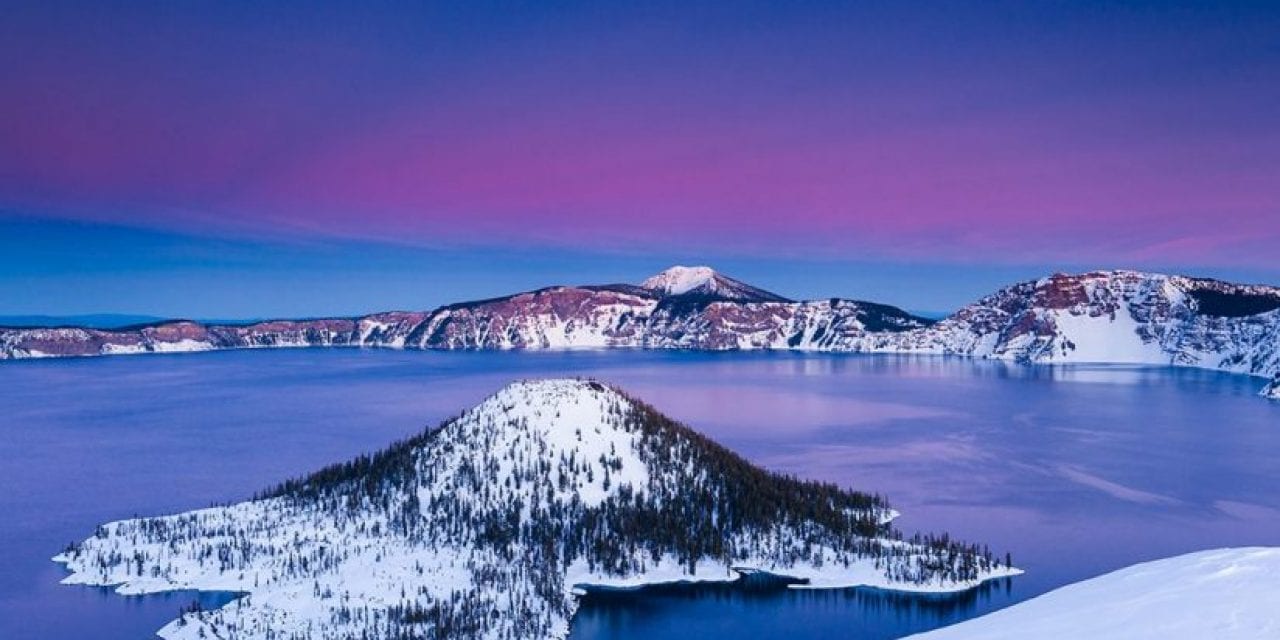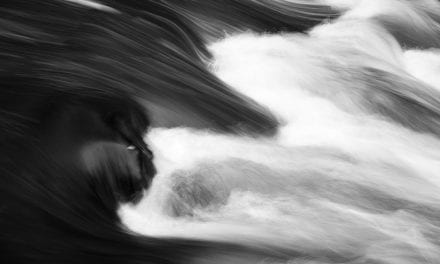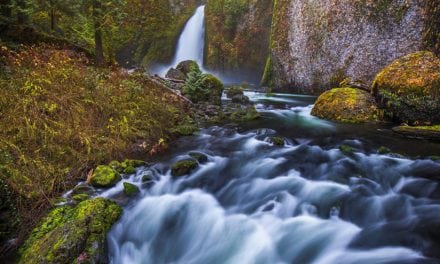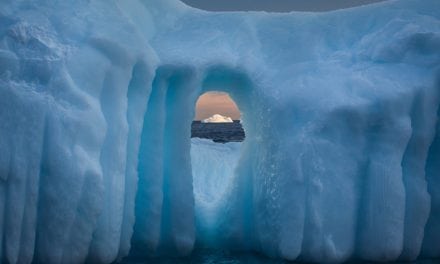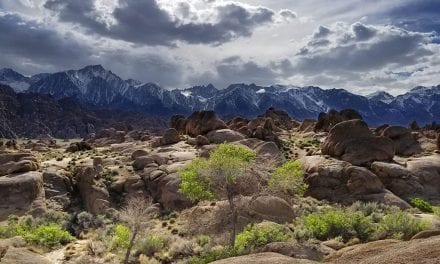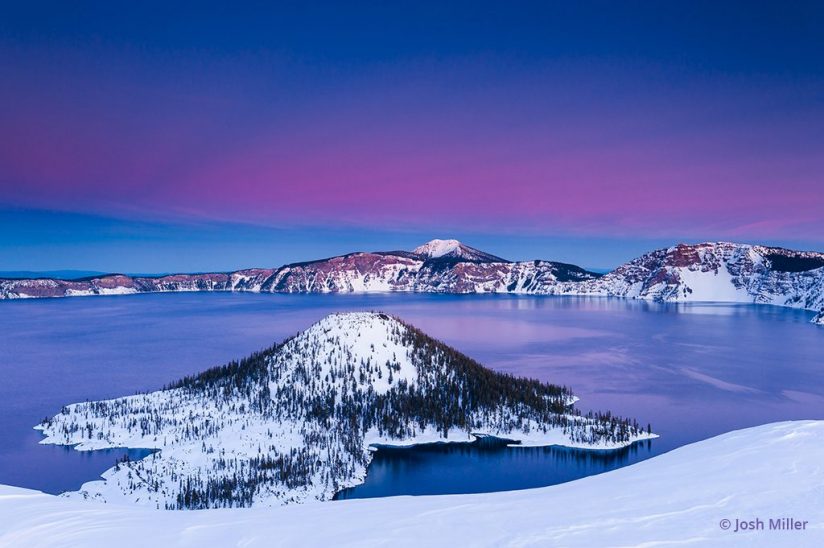
While I used a tripod to create this image of Crater Lake many years ago, with the stabilization tech now available I could have easily shot this image hand-held at the 1/6 sec. exposure it was made at. It’s a new world of lightweight backcountry shooting when images like this are possible without a tripod.
Should I bring the tripod? This is the question I used to ask myself before every photo shoot. But with stabilized lenses, better high-ISO capabilities and sensor-based stabilization now common in modern digital camera, are tripods obsolete? The days of needing to carry a tripod on every shoot may be gone.
Or are they? Depending on what subjects you shoot, the tripod really may be a thing of the past. Do you mostly shoot single frames of static subjects in decent light that allows you to achieve the shutter speed and aperture you want? Then you probably don’t need to be carrying that heavy tripod anymore. But for those of us landscape and wildlife photographers who want to shoot multiple exposures, use super-slow shutter speeds or achieve the best image quality in low-light conditions, there is still a place for the tripod in our tool kit for at least some shoots.
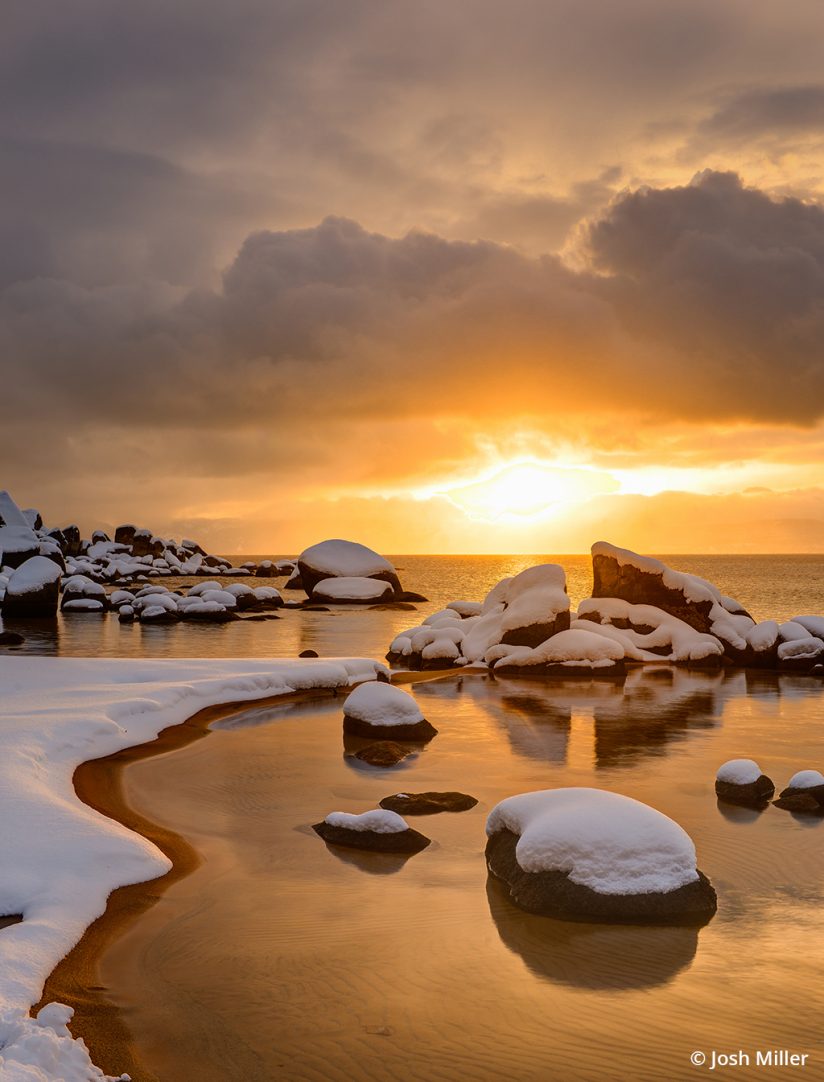
A tripod was a must for this HDR winter image of Lake Tahoe. The tripod allowed me to shoot multiple bracketed frames at slow shutter speeds to create a final HDR image in post-processing.
The Benefit Of Slowing Down
We all know tripods are a drag to carry and slow us down, but for me personally, I often find the most valuable part of using a tripod is exactly that. By slowing me down, it forces me to really evaluate my compositions rather than just shooting fast and loose. Often, even for images that I could shoot without a tripod, I find my compositions are stronger as a result of slowing down and making tiny adjustments to the details included and excluded from the scene. While composing hand-held is often easily possible, I find that it is far less exact then having the camera stable the entire time.
For landscape photography specifically, I find that when using a tripod, I actually shoot fewer frames, but my “keeper” rates are far higher than when I shoot hand-held. That said, shooting hand-held is way faster and more convenient—and from a technical standpoint, often just as sharp and well-exposed—as if I had been using a tripod. So, in many circumstances, it is more of a personal preference.
Exposure Considerations
In addition to the advantages of slowing down the composition process, the real advantage of a tripod for landscape photographers is the ability to shoot very slow shutter speeds at smaller apertures (the sharpest ones) and at base ISO for highest quality. It’s one thing to be able to shoot static subjects at fairly slow shutter speeds using sensor and/or lens stabilization, but it is an entirely different thing to be able to blur moving subjects like flowing water at very slow shutter speeds. While stabilization may help you achieve tack-sharp images of a waterfall at 1/4 of a second (this is somewhat dependent on focal length), it is an entirely different thing to be able to shoot that same waterfall at shutter speeds of several seconds, creating very dramatic and artistic flowing water. The same concept would apply for long exposures of waves or moving clouds.
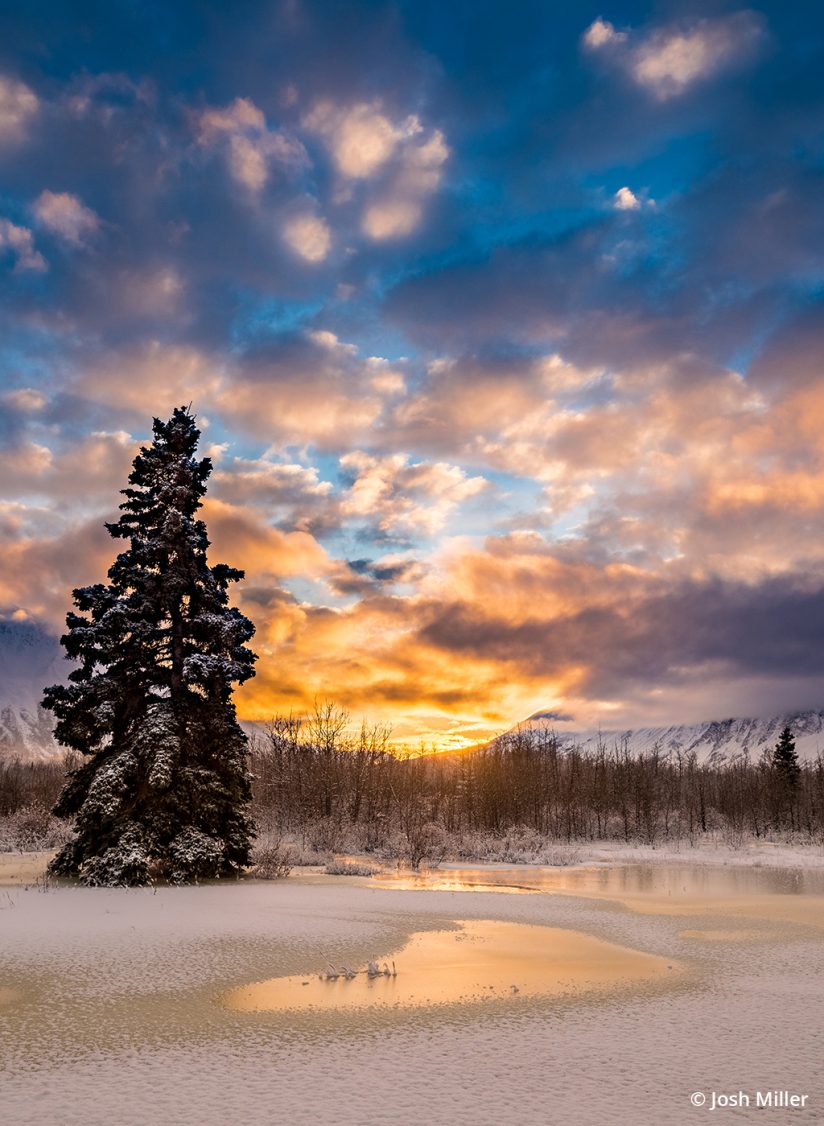
This image from the Yukon is actually a hand-held HDR image. It all happened so fast, I did not have time to run back to the car for the tripod, so I shot a group of hand-held bracketed images at about 10 fps. I kept my shutter speed fast and used sensor stabilization. I got lucky when the computer was able to align the files into a single HDR image. Not the best way to do it—but in a pinch, it worked.
Another advantage of a tripod is that it allows you to bracket several frames of different exposures to create HDR images. For most of us landscape shooters, HDR is now a mainstay of our workflow. While I have been blown away with how, in a pinch, I can blend bracketed hand-held sequences at faster shutter speeds, for the highest quality and the greatest creative flexibility, a tripod allows for slow shutter speeds and greater depth of field without the worry that the shots won’t line up correctly in post-processing.
Support For Heavy Lenses
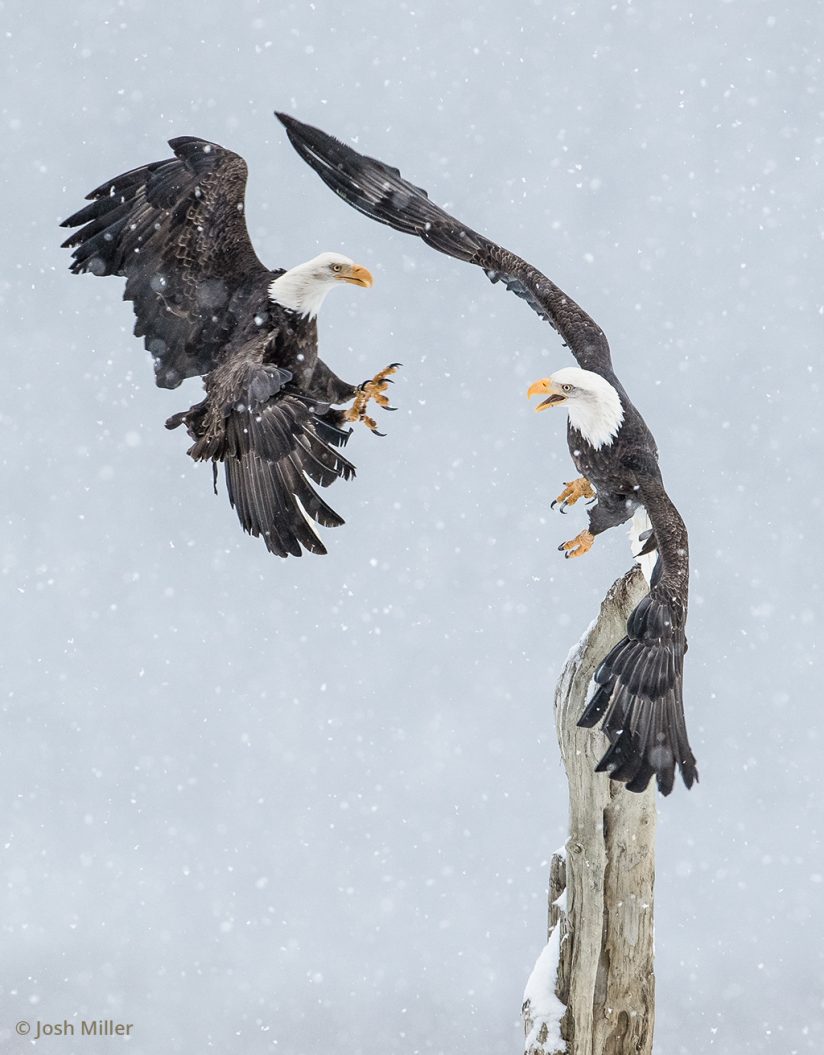
When photographing wildlife, you are often using a very heavy telephoto lens, which is nearly impossible to hand hold for long periods of time. Using a tripod, I was able to take the weight out of my hands and pre-focus on the perch the eagles had been using. I then just waited for the action to happen and didn’t even have to recompose because the perch was already framed for action.
One last factor that is often overlooked with regard to tripods is their ability to help support heavy telephoto lenses—even if you are shooting at shutter speeds fast enough to hand hold. During my wildlife photo workshops, we often set up at a location and may shoot the action for an hour or more without moving. One example would be during my Alaskan bald eagle workshops, where we shoot eagles feeding and fighting over salmon on the shore of a frozen river. While it may take the eagle and his friends an hour or more to eat the fish, can you keep your hand-held telephoto lens up to your eye for all that time? My clients who are hand holding their lenses often miss some of the best action sequences because they have to let their arms and backs relax. I have even heard stories of photographers hurting their backs trying to hand hold large telephoto lenses for too long on a subject. This problem is alleviated by simply placing the lens on a solid-quality tripod and head that take the weight out of your hands and allow you to track your subject with a light touch on the camera.
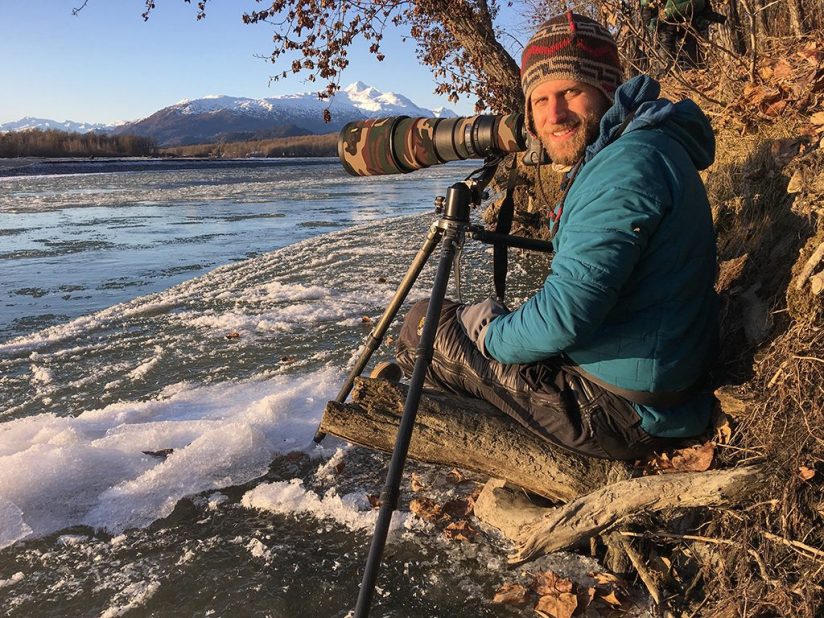
This image of me shooting with my 500mm f/4 during my Alaskan eagles workshop illustrates the need for a tripod to support large telephoto lenses. Try hand holding this beast on subject for more than a few seconds.
Tripod-Free Is Possible
All this being said, aside from super-long shutter speeds and bracketing for HDR, I have been blown away by what I can do with the newer sensor-stabilized cameras, even with my old non-stabilized lenses. Recently I was shooting along the Mendocino Coast in California and decided to leave the tripod in the car for a mid-day hike to a waterfall, thinking, “Oh, it will be in the sun so I won’t want to shoot it.” When I got there, I discovered it was actually in full shade. Having left the tripod back in the car, I was forced to hand-hold shots as slow as 1/2 sec. and was blown away by how sharp many of them were (especially when I braced myself against a tree).
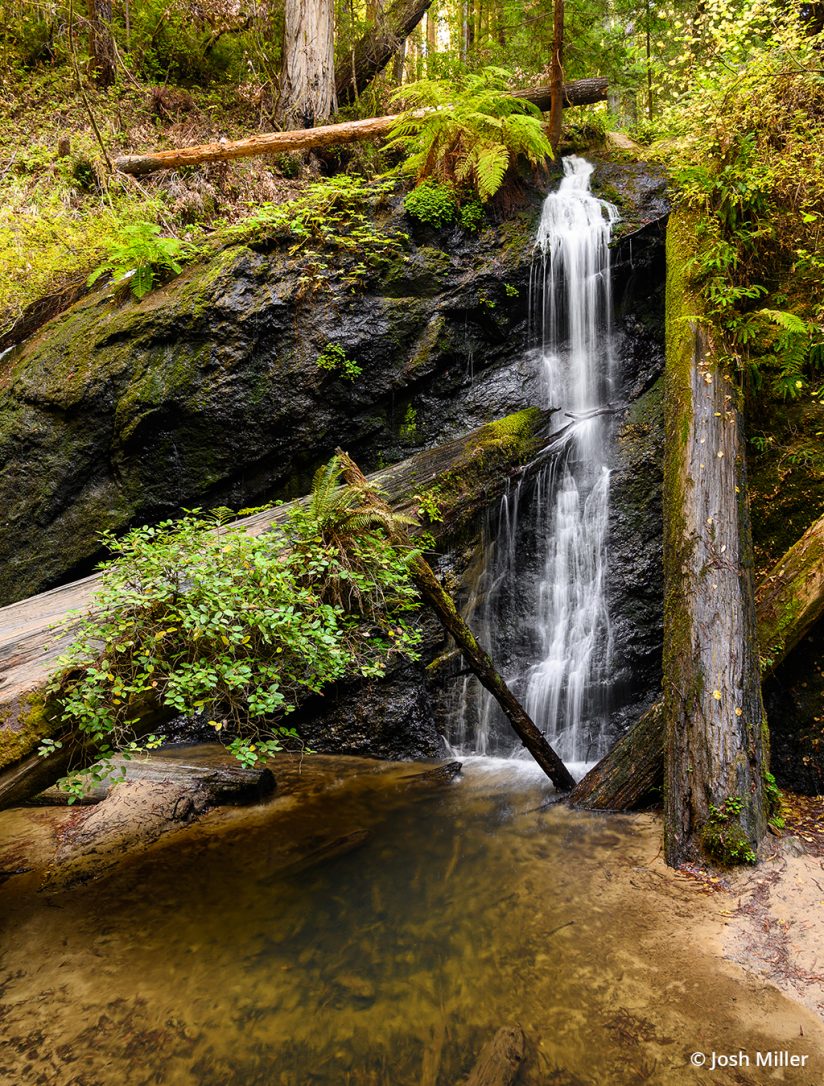
During a mid-day hike along the California coast, I didn’t bother to bring my tripod thinking this waterfall would be in full sun. As it turns out, it was completely in the shade. By using the newest in-body stabilization found on the Nikon Z 6, I was able to hand hold the camera with the NIKKOR Z 24-70mm f/4 for a 1/2 sec. exposure. This allowed me to get sharp images with blurred flowing water almost as good as if I had carried my tripod.
While I still wish I had used a tripod so I could have shot exposures several seconds long at base ISO and used smaller apertures, I was surprised by the material I was able produce.
For now, the decision of whether or not to bring a tripod is somewhat subject dependent, but as cameras get lighter, and high ISO ability and stabilization technology continue to improve, the times when it is necessary to carry a tripod may further diminish. While I don’t see the need for a tripod for those long, water-blurring exposures going away any time soon, I can easily see a time when better sensor dynamic range eliminates the need to bracket frames for HDR. Can you imagine a sensor with greater dynamic range than the human eye? I am sure it’s not as far off as we think.
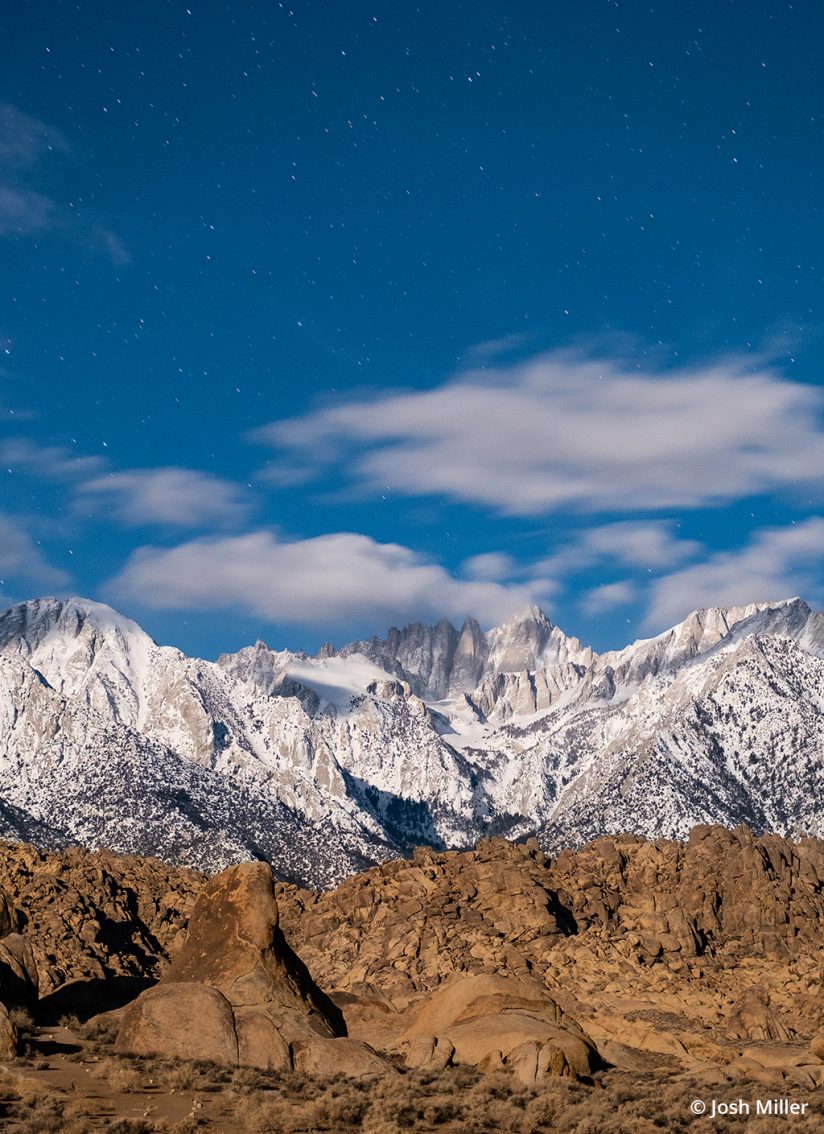
This 15-second night shot of Mount Whitney wouldn’t be possible without a tripod. Maybe someday stabilization technology will get to that point, but hand holding shots for several seconds seems a long way off.
So, though the tripod is not yet obsolete, for many of us the days of needing to carry one on every shoot are over, and as technology progresses, more photographers will find themselves in this group more often. After recently comparing the offerings of several different camera manufacturers, I really find it amazing the tools we have available to us today. It has never been easier to get properly exposed and tack-sharp images of subjects that were nearly impossible to shoot just a few years ago. Tripod or not, there is no reason we should not all be creating the best images of our lives.
The post Are Tripods Obsolete? appeared first on Outdoor Photographer.

